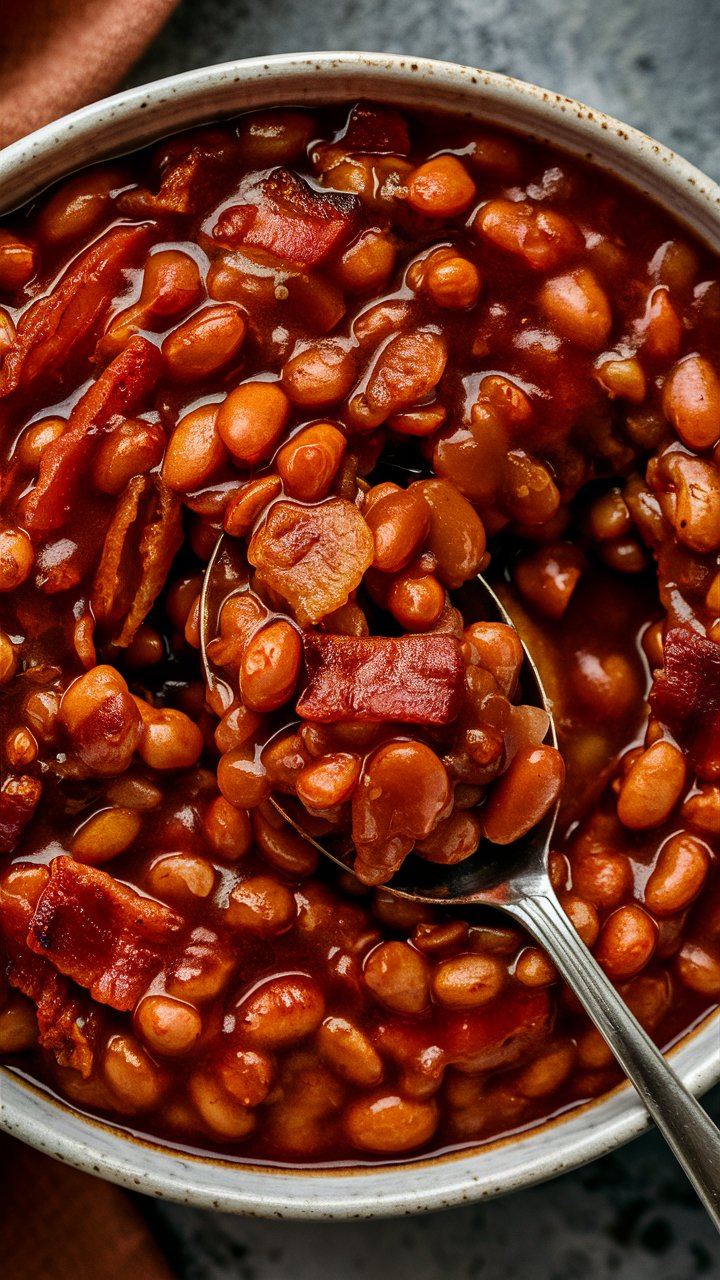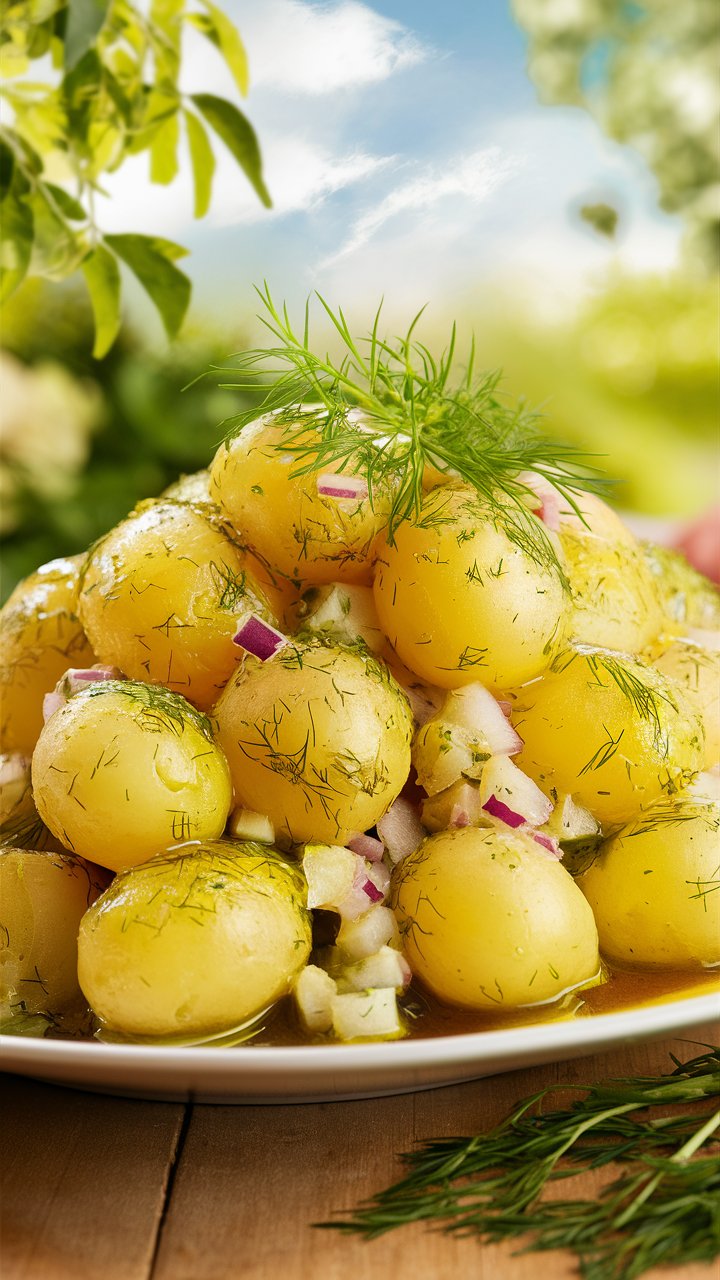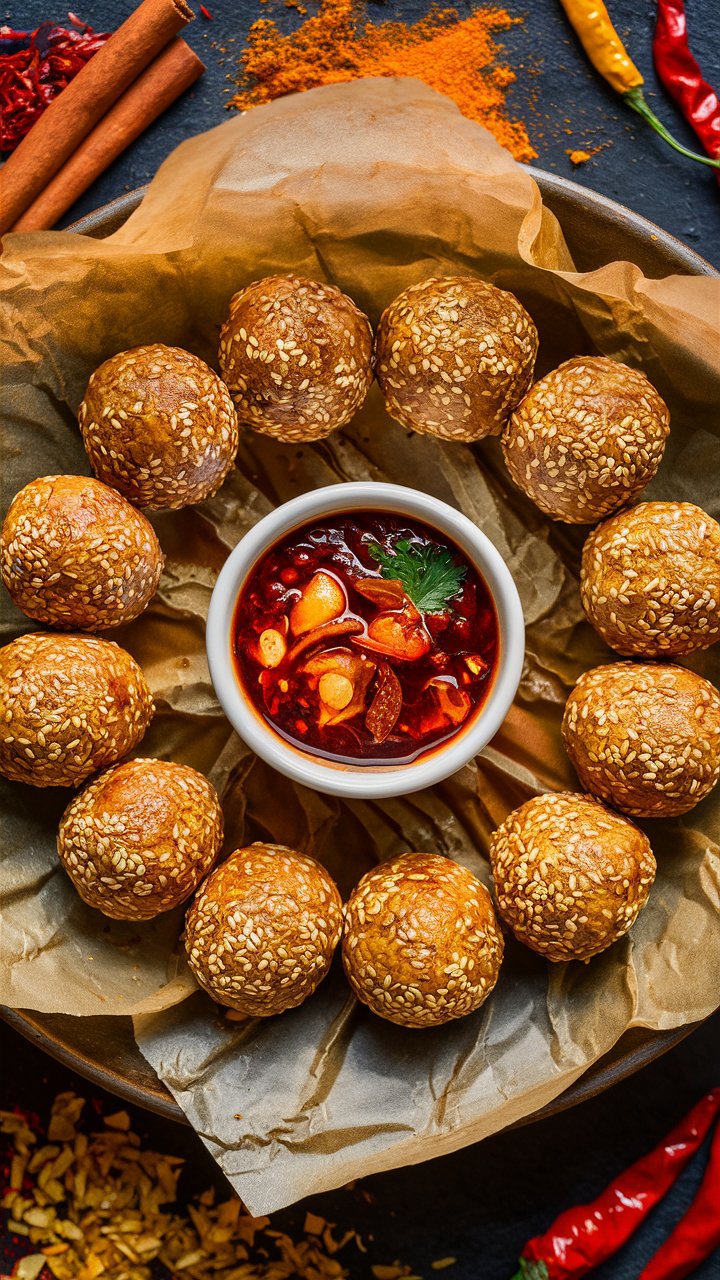There’s something undeniably comforting about a bowl of smoky, sweet, and savory baked beans bubbling straight from the oven. Whether you’re planning a weekend barbecue, a cozy family dinner, or a potluck with friends, Homemade Baked Beans are that timeless side dish that never fails to impress.
While canned beans offer convenience, nothing compares to the flavor depth of homemade. When you make them from scratch, every bite tells a story — tender beans soaked in a rich, caramelized sauce infused with molasses, maple syrup, bacon, and just a hint of mustard. It’s nostalgia in a spoon.
In this guide, I’ll walk you through the best homemade baked beans recipe that strikes the perfect balance between sweet and smoky, hearty and wholesome. You’ll also discover easy variations, storage tips, serving ideas, and expert tricks that guarantee success every single time.
Why You’ll Love This Easy Baked Beans Recipe
This recipe doesn’t just recreate the flavor of traditional baked beans — it elevates it.
Here’s why you’ll fall in love with it:
- ✅ Authentic Flavor: A slow-baked sauce made with molasses, maple syrup, and tomato paste gives deep caramelized notes you can’t get from canned versions.
- ✅ Customizable Sweetness: Adjust the sugar and syrup to your personal taste without losing balance.
- ✅ Healthier Alternative: Less sodium, fewer preservatives, and more fiber than store-bought brands.
- ✅ Perfect Texture: Tender beans that hold their shape — never mushy, never undercooked.
- ✅ Make-Ahead Friendly: Even better the next day as flavors deepen overnight.
Homemade baked beans are pure comfort food that works for every occasion — from Sunday brunch to summer cookouts.
Ingredients You’ll Need
Let’s talk ingredients. Quality matters, and every item in this recipe contributes to that signature baked bean flavor — rich, smoky, slightly sweet, and beautifully thick.
Base Ingredients
- 1 pound (450g) dried navy beans – small, creamy beans that hold up beautifully during slow cooking. (Great Northern beans or pinto beans are fine substitutes.)
- 8 ounces (225g) smoked bacon, diced – adds savory depth and a rich, smoky note. (Use turkey bacon or skip for a vegetarian version.)
- 1 large yellow onion, finely diced – for sweetness and body.
- 1 green bell pepper, diced – adds a subtle freshness and color contrast.
- 3 cloves garlic, minced – a flavor essential.
For the Sauce
- 1/3 cup molasses – the secret to that deep, slightly bitter-sweet flavor.
- 1/4 cup pure maple syrup – provides a round, natural sweetness.
- 3 tablespoons tomato paste – adds richness and color.
- 2 tablespoons Dijon mustard – cuts through sweetness with tangy sharpness.
- 2 tablespoons apple cider vinegar – balances flavor and enhances brightness.
- 1 teaspoon smoked paprika – gives that slow-smoked taste even if you skip the bacon.
- 1 teaspoon dried thyme – earthy and aromatic.
- 1/2 teaspoon freshly ground black pepper.
- 1 bay leaf.
- 4 cups low-sodium chicken or vegetable broth – enough liquid to cook the beans slowly and evenly.
- 1 teaspoon salt (add only after beans are soft).
💡 Pro Tip: Always use unsulphured molasses — it’s smoother and less bitter than blackstrap molasses.
Step-by-Step: How to Make Homemade Baked Beans
This recipe takes patience — but the process is incredibly simple. Once your ingredients are prepped, the oven does most of the work.
Step 1: Prep and Soak the Beans
Start by sorting your dried beans to remove any stones or damaged pieces. Rinse them under cool water.
You have two soaking options:
- Overnight soak: Place beans in a large bowl, cover with cold water by 2 inches, and soak overnight (8–12 hours).
- Quick soak: Bring beans and water to a boil for 2 minutes, turn off the heat, cover, and let sit for 1 hour.
Drain and rinse before cooking. Soaking shortens cooking time and helps the beans cook evenly.
Step 2: Cook the Bacon and Aromatics
Preheat your oven to 325°F (165°C).
In a heavy Dutch oven or oven-safe pot, cook the diced bacon over medium heat until the fat renders and the bacon turns golden. This takes about 5–7 minutes.
Add diced onion and bell pepper to the same pot and sauté until soft, about 5 minutes. Add the minced garlic and cook for another 30 seconds — just until fragrant.
Step 3: Combine Ingredients
Stir in the drained beans, molasses, maple syrup, tomato paste, mustard, vinegar, paprika, thyme, black pepper, and bay leaf. Mix everything thoroughly so each bean is coated in that gorgeous, glossy sauce.
Pour in the broth — it should just cover the beans. Bring the mixture to a gentle simmer on the stove.
Step 4: Bake Slowly
Cover the pot with a tight-fitting lid and transfer to the preheated oven. Bake for 1 hour, then uncover and continue baking for another 45–60 minutes, stirring once or twice.
By now, your kitchen will smell irresistible — smoky, sweet, and savory all at once.
If the mixture looks dry before the beans are fully tender, add a little hot water (about 1/4 cup at a time). If it looks too wet, leave the lid off to thicken.
Step 5: Final Seasoning
Remove the bay leaf. Taste and add salt if needed — always near the end to avoid tough skins.
Let the beans rest for 10–15 minutes before serving. The sauce will continue to thicken as it cools slightly.
Texture and Taste: What to Expect
The best homemade baked beans are thick and glossy — not soupy, not dry. The beans should be tender but still hold their shape.
The flavor is a symphony: smoky bacon mingling with caramelized molasses, maple sweetness balanced by mustard and vinegar. Every spoonful should have layers — the kind of depth only slow baking can create.
Nutrition Snapshot
Per ½-cup serving (approximate):
- Calories: 215
- Protein: 9g
- Carbohydrates: 32g
- Fiber: 7g
- Sugar: 12g
- Fat: 6g
- Sodium: 380mg
These beans have less sugar, less sodium, and more fiber than canned varieties — a wholesome, homemade alternative without sacrificing flavor.
Healthier Variations and Customizations
One reason homemade baked beans are amazing is their flexibility. You can easily tweak them to suit your preferences or dietary needs.
1. Vegetarian or Vegan Baked Beans
Skip the bacon entirely and use 2 tablespoons olive oil for sautéing. Add 1 teaspoon of liquid smoke or smoked paprika for that same BBQ-style aroma.
2. Low-Sugar Version
Replace half the molasses with unsweetened tomato sauce and reduce maple syrup to 1 tablespoon. Add a pinch more mustard to balance flavor.
3. Extra Protein Boost
Add 1 cup diced tofu, tempeh, or even cooked lentils in the last 30 minutes of baking.
4. Extra Veggie Option
Stir in diced carrots, celery, or zucchini — they’ll add texture and nutrients without altering taste dramatically.
5. Spicy Twist
Add ½ teaspoon chili flakes or 1 tablespoon chipotle peppers in adobo sauce for heat and smokiness.
6. Sweet Southern Style
Use brown sugar instead of maple syrup, and add a dash of bourbon for a deep Southern flavor.
Serving Suggestions
Homemade baked beans are incredibly versatile — here are some favorite ways to enjoy them:
- BBQ Side Dish: The classic pairing — serve beside ribs, grilled chicken, burgers, or pulled pork.
- Breakfast Upgrade: Spoon over buttered toast and top with a poached or fried egg.
- Stuffed Potatoes: Fill baked russet or sweet potatoes for a satisfying meatless meal.
- On Rice: Serve over brown rice or quinoa for a fiber-rich bowl.
- With Cornbread: A traditional, soul-warming combination.
- As a Dip: Lightly mash and serve warm with pita or tortilla chips.
- Picnic Favorite: Served cold or room temperature — still delicious!
💡 Presentation Tip: For gatherings, serve baked beans in mini cast-iron skillets or small mason jars garnished with fresh parsley.
Expert Tips for Perfect Homemade Baked Beans
Getting perfect baked beans isn’t about luck — it’s about small smart choices:
- Soak the beans properly. It reduces cooking time and improves texture dramatically.
- Don’t add salt early. It can toughen the beans’ skins. Season toward the end.
- Cook slowly. The flavor develops with time — rushing leads to blandness.
- Stir occasionally. Prevents sticking and ensures even cooking.
- Use good molasses. Unsulphured or mild molasses creates a smoother flavor.
- Let them rest before serving. The sauce thickens and the taste deepens.
- Store overnight. Baked beans taste even better the next day.
Common Mistakes to Avoid
Even seasoned cooks make these errors — here’s how to avoid them:
- ❌ Skipping the soak: Leads to unevenly cooked beans.
- ❌ Adding acids too soon: Tomato paste and vinegar should go in after beans soften if pre-cooking on stove.
- ❌ Not checking liquid: Beans absorb moisture; monitor every 30 minutes.
- ❌ Over-sweetening: Remember the sauce thickens and sweetens further as it bakes.
- ❌ Neglecting seasoning: Don’t be shy — beans need bold flavors.
Storing, Freezing, and Reheating
Homemade baked beans store beautifully — and often taste better the next day.
Refrigeration:
Let beans cool completely. Store in airtight containers for up to 5 days.
Freezing:
Divide into freezer-safe portions and freeze for up to 3 months. Leave ½-inch headspace in containers for expansion.
Reheating:
Warm gently in a saucepan over medium-low heat, adding a splash of water if needed. Or microwave on 70% power, stirring occasionally until hot.
💡 Make-Ahead Tip: You can assemble everything through Step 3, refrigerate overnight, then bake the next day (add 15 extra minutes to bake time).
Flavor Pairings and Menu Ideas
Homemade baked beans complement both classic and modern dishes beautifully. Here are a few pairing ideas:
- Grilled Meats: BBQ ribs, smoked brisket, or roasted chicken.
- Vegetarian Pairings: Grilled portobello mushrooms or smoky roasted cauliflower steaks.
- Comfort Combos: Baked beans with mac and cheese, potato salad, or coleslaw.
- Summer BBQ Plates: Pair with corn on the cob, cornbread, and watermelon salad.
- Brunch Platter: Add scrambled eggs, roasted tomatoes, and sourdough toast.
Cultural Roots: The Story Behind Baked Beans
Baked beans are more than a side dish — they’re a piece of culinary history.
Originating from Native American cooking methods that slow-cooked beans with maple syrup and bear fat, the dish evolved as settlers introduced molasses and salt pork. Over centuries, it became a beloved staple in New England cuisine, and later a worldwide comfort food.
Today, every region has its twist — Boston baked beans, Southern brown sugar beans, and British-style tomato-sweet beans. This recipe takes inspiration from those traditional roots while offering flexibility for modern tastes.
Frequently Asked Questions
Q1: Can I make these beans in a slow cooker?
Yes! After Step 3, transfer everything to a slow cooker. Cook on low for 6–7 hours or high for 3–4 hours. Remove the lid for the final hour to thicken the sauce.
Q2: Can I use canned beans instead of dried?
Absolutely. Use 3 cans (15 oz each) of drained, rinsed beans. Reduce the broth to 2 cups and bake for 30 minutes covered, then 20 minutes uncovered.
Q3: How do I make them vegetarian?
Omit the bacon, use olive oil for sautéing, and add 1 teaspoon smoked paprika or liquid smoke for flavor depth.
Q4: My beans are still hard — why?
Beans may be old or the liquid was salted too early. Continue cooking and ensure acids like tomato paste and vinegar are added after softening.
Q5: Are baked beans gluten-free?
Yes — just check that your mustard, vinegar, and broth are certified gluten-free.
Q6: Can I adjust the sweetness?
Of course. For less sweet beans, reduce molasses to 2 tablespoons and maple syrup to 1 tablespoon, or increase mustard and tomato paste slightly.
Q7: Can I meal-prep baked beans?
Yes — they store well for 5 days and freeze for months. Great for weekly meal prep!
Final Thoughts: Homemade Goodness, Simplified
Creating Homemade Baked Beans from scratch is a simple act of culinary love — the kind that fills your kitchen with irresistible aromas and your table with smiles.
This recipe proves that homemade doesn’t have to be complicated. With a few pantry staples and some patience, you can craft a dish that’s deeply flavorful, healthier, and far superior to anything in a can.
So next time you fire up the grill or plan a family dinner, skip the store-bought beans and make your own. You’ll taste the difference — and your guests will, too.
Because some recipes aren’t just food — they’re tradition, warmth, and comfort shared by the spoonful.




